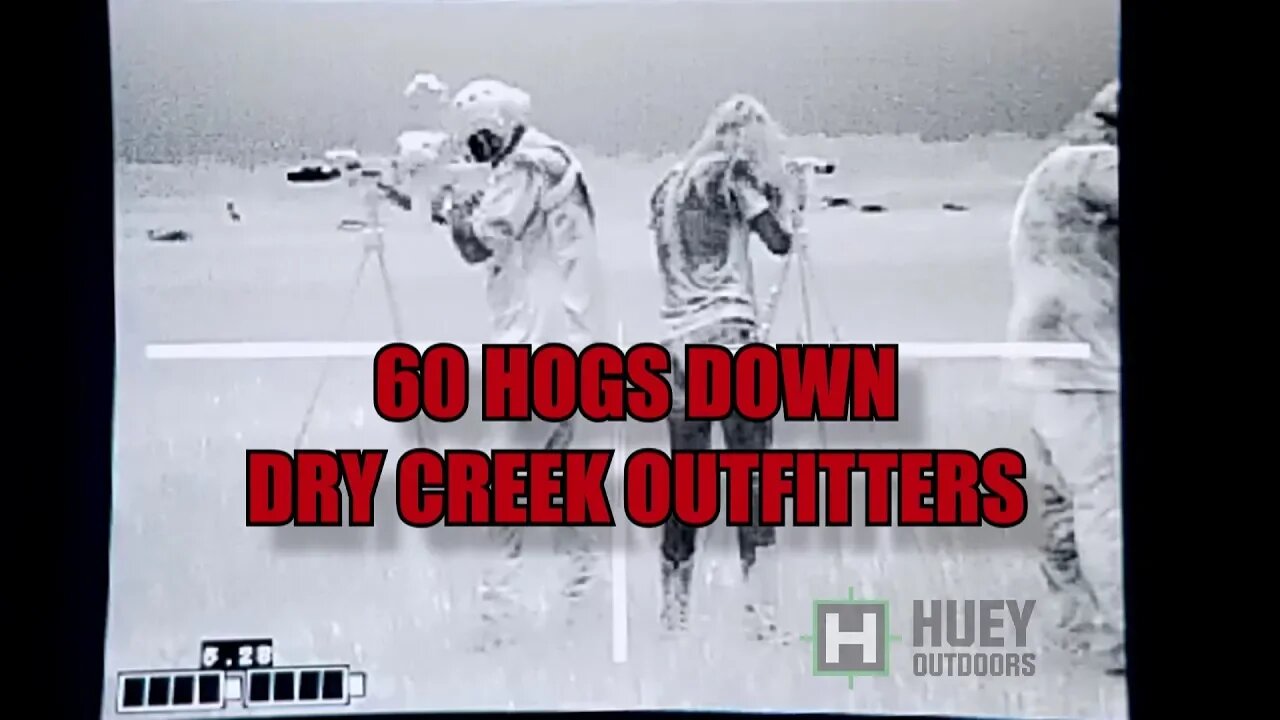Premium Only Content

60 HOGS DOWN WITH DRYCREEK OUTFITTERS
Thermal and Night vision provided by http://www.hueyoutdoors.com/
Looking for a guided thermal hog hunt? I recommend https://www.huntdrycreek.net/ help keep the feral hogs under control, preventing them from spreading disease to the livestock, contaminating the water supply, and destroying crops.
GO FOLLOW KAITLYN @ https://www.instagram.com/kaitlynlowes/
Feral hogs are not considered game animals in Texas and may be hunted by any means or methods at any time of year. Thermal and night vision being some of the most effective means. https://tpwd.texas.gov/huntwild/wild/nuisance/feral_hogs/
Feral swine compete with native wildlife for multiple resources, specifically food, habitat, and water. Feral swine diets overlap with those of native wildlife, such as bear, deer, and turkey, which results in competition for important and limited natural food supplies. Feral swine activity will often deter other species from living in an area, resulting in competition over prime habitat. Feral swine wallow in mud to maintain proper body temperature which can be particularly problematic during dry seasons when they monopolize and contaminate limited water sources.
Feral swine also prey directly on the nests, eggs, and young of native ground nesting birds and reptiles, including threatened or endangered species. Game birds such as wild turkeys, grouse, and quail can also be impacted. Feral swine have even been documented killing and eating deer fawns, and actively hunting small mammals, frogs, lizards, and snakes.
Feral swine wallows are prime mosquito habitat which contributes to the prevalence of various mosquito-borne diseases. Wallows can also be a place of transmission for bacteria and parasites from feral swine to native wildlife that come to drink. https://www.aphis.usda.gov/aphis/ourfocus/wildlifedamage/operational-activities/feral-swine/feral-swine-daral_hogs/mage/feral-swine-natural-resource-damage
-
 10:02
10:02
MichaelBisping
21 hours agoBISPING: "Was FURY ROBBED?!" | Oleksandr Usyk vs Tyson Fury 2 INSTANT REACTION
67K13 -
 8:08
8:08
Guns & Gadgets 2nd Amendment News
2 days ago16 States Join Forces To Sue Firearm Manufacturers Out of Business - 1st Target = GLOCK
97.5K86 -
 10:17
10:17
Dermatologist Dr. Dustin Portela
2 days ago $17.70 earnedOlay Cleansing Melts: Dermatologist's Honest Review
137K14 -
 1:02:20
1:02:20
Trumpet Daily
2 days ago $42.82 earnedObama’s Fake World Comes Crashing Down - Trumpet Daily | Dec. 20, 2024
94.9K61 -
 6:29
6:29
BIG NEM
1 day agoCultivating God Mode: Ancient Taoist NoFap Practices
70.1K17 -
 30:53
30:53
Uncommon Sense In Current Times
2 days ago $11.03 earned"Pardon or Peril? How Biden’s Clemency Actions Could Backfire"
83.6K7 -
 40:01
40:01
CarlCrusher
1 day agoSkinwalker Encounters in the Haunted Canyons of Magic Mesa - ep 4
77.1K9 -
 59:44
59:44
PMG
2 days ago $10.28 earned"BETRAYAL - Johnson's New Spending Bill EXPANDS COVID Plandemic Powers"
78.3K49 -
 6:48:50
6:48:50
Akademiks
1 day agoKendrick Lamar and SZA disses Drake and BIG AK? HOLD UP! Diddy, Durk, JayZ update. Travis Hunter RUN
196K35 -
 11:45:14
11:45:14
Right Side Broadcasting Network
10 days agoLIVE REPLAY: TPUSA's America Fest Conference: Day Three - 12/21/24
379K31